Review: #31097 Townhouse Pet Shop & Café
Since it is much larger than previous Creator 3-in-1 sets, this set might offer a taste of what we have learned to expect from the Creator Expert Modular Building Series. Let’s find out; is this set a good stepping stone between those two themes?
I’m familiar with smaller buildings in the Creator 3-in-1 series (such as the 566 piece #31065 Park Street Townhouse), and I recently built the largest set in the Creator Expert Modular Building series (the 4,002 piece #10255 Assembly Square). With nearly a thousand pieces, this set fits somewhere inbetween the Creator 3-in-1 and Creator Expert series—let’s see how it compares to building experience and the architectural quality those two themes.
Before we get started, I want to say that that the look of this set off the box did not impress me. It took me a while to decide why, but in the end I concluded it was the vacant street corner which was the problem. I will discuss further below, but the Creator Expert Modular Building series has given us some great buildings, and some of the best have been strong landmark buildings on corner sites. Street corners are perfect high profile locations for building owners to make an impression and show off with style. So leading with a vacant street corner in this set was an underwhelming design layout to my mind. However, let’s see if the building experience can redeem any shortcomings in architectural composition.
About the set
This set was released summer 2019 and contains 969 parts. It is $79.99 (£74.99, €79.99). The set is labelled 9+ whereas previous city sets in this theme were labeled 8-12 years. This seems to indicate a broadening of the target audience to include adults, too.
Since it’s a 3-in-1 set, it includes instructions to build three different city scenes. The main scene is of a city street corner. The corner position is occupied by an outdoor dining area for a café. On the left of the outdoor dining area is a two-story older style building which houses the café, with an upper level kitchen. On the other side of the outdoor dining area is a three-story building that is more modern. (The ground level is occupied by a pet store, with a two-story apartment above.)
The alternative builds are a heritage bank building and a market street with street tram. I built all three, and will discuss these builds below.
Related Sets
The Creator 3-in-1 theme has an unusually broad variety of sets; its only unifying element is that every set includes instructions for three different models.
Previous sets with an architectural or urban nature include:
- #31050 Corner Deli (467 pieces)
- #31065 Park Street Townhouse (566 pieces)
- #31038 Changing Seasons (536 pieces)
- #31036 Toy & Grocery Shop (466 pieces)
At 969 pieces, #31097 Townhouse Pet Shop & Café is a notably larger set for this theme. The slightly higher recommended age and the modular building techniques (which we will discuss later) make this set a nice bridge between the Creator and Creator Expert building series.
In the related Creator Expert series, there have been 14 modular buildings starting with #10182 Café Corner twelve years ago. Each of those sets presents a building (or two) with strong architectural presence and a high level of realistic architectural detailing. This set borrows a theme from #10218 Pet Shop (although that set is no longer available in stores).
Build process
Before I get into the build process, I wanted to share more on my initial impression of this set based on the box imagery. On first seeing this set I was disappointed on the architectural look of the set. The main model depicts an urban street corner with a vacant corner position. In real life, we often see a strong “landmark” building on street corners, maximizing the street appeal of these corner positions. These buildings often have greater height than the mid-block buildings and almost always have strong architectural features and nods to the institutions and major companies who commissioned the building, since corner lots are prestigious real estate.
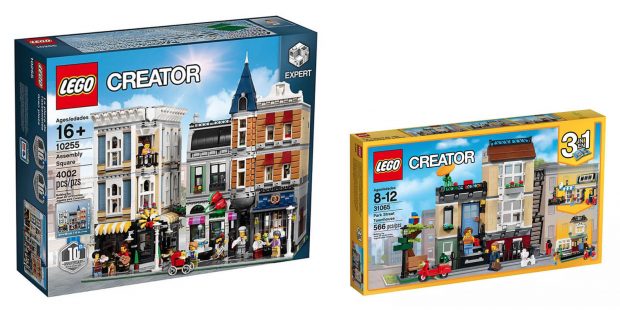
I compared this set to 10255 Assembly Square from the Creator Expert Modular series, and 31065 from the 3-in-1 series. (Photo: LEGO Group.)
Seeing the central part of the composition being ‘vacant’ space was a disappointment to me. While we do not see the striking façade of a strong building, it allows us to see the sides of two adjoining buildings instead.
To me, the Modular Building Series is all about the architectural quality of the building depicted and the designers go to some effort to create realistic architectural detailing. I thought this building was weak in this regard, and if the architectural design of the set was stronger, it would have created a much more appealing set.
I’ve also considered that the Creator series is targeted to children whereas the Creator Expert sets are more appealing for adults, which is why architectural quality is not such an important factor. While my initial opinion was not as positive as I had envisaged, let’s see how the build process goes. Remember, we have not just one but three different models to explore!
Main Build
The main build is the box front one featuring the “townhouse, pet shop and café”. You will find bags for six numbered stages (Two bags for stage 1, and one bag for the remaining stages.) There is a nice sturdy 354-page instruction book. This book is in landscape layout for the cover, but inside is set out in portrait, which works well. Some like to have one book for each alternative build, however my personal preference is for all the options to be bundled into one book; this keeps everything in one place.
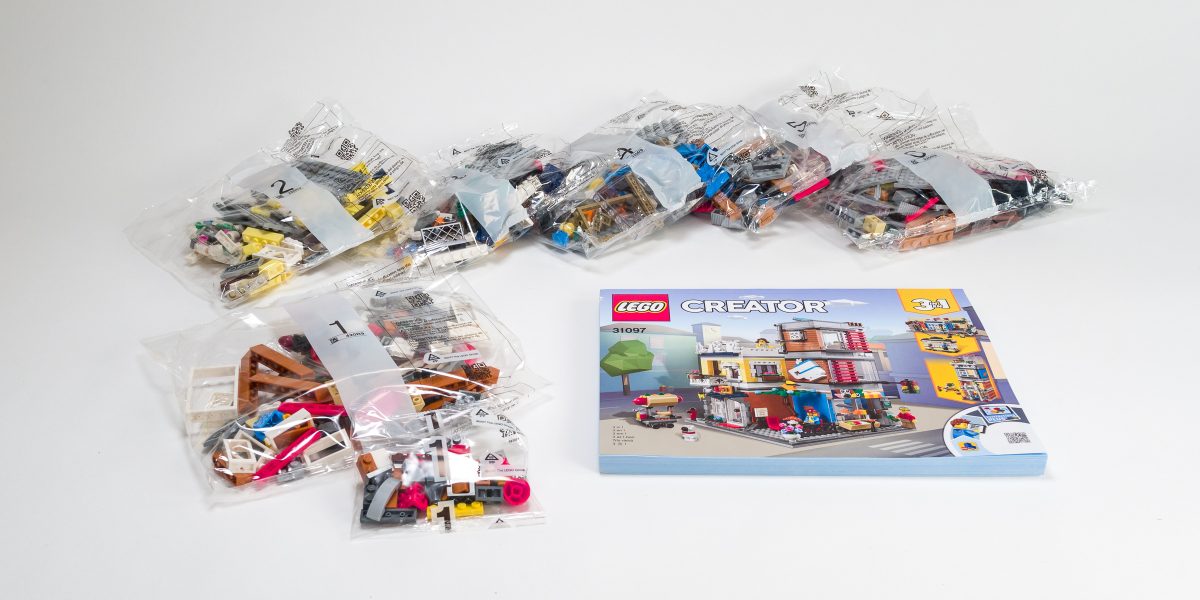
The main build is assembled in six stages, and the set features a sturdy booklet with instructions for all three models.
Bag 1
The build process starts with a little hot dog cart, with great color usage. Afterwards, we will move on to the first floor of the café.
The café features more traditional architectural design and detailing which I found enjoyable to build. While the interior is pretty basic, it has some nicely detailed rusticated stone columns on the exterior. The doorway awning is formed with a 4×6×⅔ triple curved wedge (part 52031), a part normally used as a vehicle hood. The building process was complex enough to be interesting yet not overly finicky nor repetitive. It gives an authentic experience of the building experience in the Creator Expert series.
Bag 2
The second floor of the café uses lots of bricks in the rare and pleasing 226Cool YellowBright Light Yellow color. The building exterior has a well-designed balcony using decorative balcony railings and has two flower boxes. Again the interior is pretty basic, but includes a well-designed small kitchen and cabinet.
Bag 3
In the third bag we assemble two smaller elements. We start with an ornate roof for the cafe building. After that, we assemble an outdoor dining area which is placed in the corner, linking the two buildings together to form the complete scene.
I do like the attempt to give the tree an organic shape, although the exposed holes in the two Technic #3 connectors used for the tree trunk looks weird. As I said above, I did find the design of this part of the build underwhelming and a weak center to link these two buildings together.
Bag 4
This bag sees us move on to the second building, starting with the pet shop. It features a vibrant 321Dark AzurDark Azure exterior and some nice brick-built pets inside (fish tank, parrot, mouse). All the animals represented in this set are brick built, with the only molded animal pieces being used as architectural features (the two white parrots on the building facade).
The pet shop sign on the building exterior, while brick built, looks a little too abstract. It’s typical of the store signage you find in sets designed for younger children, rather than sets aimed at an older audience. I did enjoy the design of the ATM, which cleverly uses a Minifigure Seat (part 4079) on its side as the awning over the money machine.
Bag 5
This bag adds a modern living room above the pet shop, complete with TV and couch. I do quite like the technique used to create the lattice window shade, a common architectural feature in current architecture as it allows natural light while reducing cooling requirements in summer.
There is a sizeable coffee shop sign on the exterior of the building featuring a nice brick-built coffee cup. I like that it is complete with steam rising from the coffee.
Bag 6
In the final bag, we complete the apartment. There is a cozy bedroom and a lovely outdoor patio with a slatted-wood pergola providing shade. There is an air-conditioning unit on the exterior and a downpipe which links the two buildings together. Finally, there is a solar panel on the roof, to indicate this modern building has been designed with a little sense of environmental awareness.
Overall, I liked that the set is actually modular; you can rearrange the two buildings and corner because the three modules are connected by Technic pins. This encourages builders to add this to their city; there are even unused pins left protruding from one of the buildings.
Alternate Builds
Because this is a 3-in-1 set, there are two alternative builds. While these alternate builds feature some nice details, I was disappointed by how few of the 969 pieces they each used. (The page count in the instruction book for the alternate builds gives us a hint about their reduced complexity: The main model has 164 pages of instructions, the market street has 99 pages, and the bank has just 83 pages.)
Market Street with Tram
This model is comprised of three 12 x 12 stud modulars which clip together in a row. It features two single level buildings, one is a barber shop and the other is a dentist office. The third module features a tram stop with covered seating and a ticket machine. Finally, there is a street tram.
The first thing I noticed was that the two buildings are much smaller than those in the main model, and only use about 60% of the bricks in the set. Both of the buildings use ‘novelty’ signs to denote the use of the building (The dentist has a large tooth and a toothbrush, and the barbershop has a comb and scissors.) This overwhelms the architectural detailing on the rest of the buildings, making this alternate build closer to what you would expect for a set designed for younger kids than the main model. With so many unused pieces, It would have been easy to add a second floor to each of the buildings, add more architectural detailing, or at least add third store to this model.
The tram and tram stop was the best part of this build. I have never built a tram in LEGO before and this was a great representation of a heritage tram. The tram has a particular style, which I was able to correlate to historic trams in the Portuguese city of Lisbon (based on research using Google Image Search.) Not only did it look good, but it featured interesting building techniques for the driver’s controls, undercarriage, and the roof mounted trolley pole.
The controls on both ends of the tram are formed with a simple tap (part 4599) in Medium Stone Grey. This is a very close match for what a tram’s controls look like – a simple lever which is pushed forward. The tap sits over a 1×1 tile (Design 35380), with green at one end and red at the other to denote the direction of travel.
The undercarriage of the tram is formed with a great collection of parts including perhaps unexpectedly a 1×4×2 fence (part 3185).
The tram stop was simple, but really effective. It is elevated above street level by one brick height. There are some little references hidden under the foundations representing things you may find under a building which were a nice touch (see picture). The tram ticket machine was also a great concept – it used the same color bricks as the tram to define its linkage to the tram as a ticket machine (rather than being another city item such as a cash machine).
Overall this alternative build is a little underwhelming in building design and had a disappointing number of left over parts. However, it is well worth looking up the instructions for this set to borrow this tram design and tram ticket machine to include in your MOC city scene.
Multi-story Bank
The third option is a three-story building with a rooftop greenhouse. The lower two levels are for an old fashioned bank with a double height ceiling. A chandelier hangs in the void above the bank chamber and the bank teller position is behind an internal wall. I enjoyed the design of this bank. As it was a historic bank building, it used traditional bank interiors which reinforced the historic nature of the building given the contrast with modern bank interiors which are open and without visible security features.
Again the set only uses just over half of the pieces from the main set. I challenged myself to build something from the remaining parts. I was surprised upon looking at all the spare parts, that most of them are not standard bricks. It is difficult to build a whole other module from them, only because of the lack of standard bricks. So it would be really easy to add some very standard bricks (1×2, 1×4, 1×6, etc…) to form the bones of more buildings and there are more than enough pieces remaining to add all the windows, doors, architectural detailing and interior elements needed to keep building. This did change my sentiment on the number of pieces left over, instead I started to come around to the idea that perhaps LEGO had made a deliberate move to leave enough pieces to inspire MOC building.
About the parts
The set has a price per part of $0.08 which is reasonable. The set does have a large number of smaller pieces such as flowers and 1×1 tiles, but this is balanced by a variety of larger parts included in the set.
Some really useful parts from the past few years:
- Plate 1×2 rounded (Design 35480) in White (6x) and Black (7x)
- 2×2 plate with reduced knobs (Design 33909) in White and Earth Blue.
New colors for existing parts:
- 1×3 brick (part 3622) in 38Dark Orange
- 1×2×3 frame (part 60593) in 308Dark Brown
- 1×4×6 frame (part 60596) in 308Dark Brown
- 1×1 ¼ circle tile (part 25269) in 222Light PurpleBright Pink
- 1×2–1×4 bracket with rounded corners at the bottom (part 2436c/28802) in 26Black
The three minifigures also include new prints. The little girl has a top with green apples and one of the adult torsos is a flannel shirt and the other is a Hawaiian shirt with singlet underneath. These are all good ‘generic’ minifigure characters which could be used in a variety of ways.
Compared to other sets
Once I finished this build, I put it next to sets #10255 Assembly Square This shows the scale difference with the Modular Building series. I did do a bit of nerdy brick counting to discover the main differences in scale. Both buildings in this set have an internal floor height of 8 bricks for the ground floor and 7 bricks for the upper levels. Compare this with #10255 Assembly Square which has an internal floor height for its three buildings of between 9 to 11 bricks for the ground floor and 6 1/3 to 7 2/3 for upper levels. This really shows how sets in the Creator Expert Modular series achieve such great architectural detailing – having even a single layer of extra height allows for three levels of modified plates which can add so much detail to a building’s design and appearance.
Another difference I noted was the impact the use of baseplates makes to the overall scale and design. Assembly Square is built on a baseplate and a half which provides a much larger area for the composition than this set. In this set each ‘module’ is formed by two 6×12 plates and the three modules are configured in a right-angle configuration. This leaves a missing quarter at the back and not making this a square just seems unsatisfactory. Contrast this layout with Set 31065 which features a hinged design giving the ability to display side by side with an open back or as a fully enclosed building. This has a footprint of 256 studs whereas this one is 432 studs (12×36).
I also compared it with #31065 Park Street Townhouse. As you can see, the scale is a closer match, althought this set does have more height and detail, likely due to the additional 400 pieces in this set.

The back has an unusual configuration which is open on both sides, but this makes it a better playset—especially since only one of the buildings has a kitchen.
And finally on a practical matter, I found the instructions were really clear, and this is of great benefit to the builder looking to expand their skills. The only instruction I had to re-read was how to put the leaves together for the tree canopy, and I had to re-read that instruction more than once to get it right!
Conclusion
My initial impression of the architectural look of this set was not positive, but I was pleasantly surprised by the building experience. The positives for me included the building experience, the variety provided by the 3-in-1 instructions and the use of recent parts in interesting ways. However, I was disappointed with the architectural quality of the main set and the lesser number of parts used in the two alternative builds. Balancing these mixed impressions, it earns our “Good” Rating (3/5 stars).
When considering this set against the Creator Expert series, it does a good job of bridging between the complexity of the regular Creator series and the Creator Expert Modular Series. The building experience is varied and interesting, and it provides a range of options for designing your own MOC’s.
Unfortunately, this particular set does not deliver on the quality building design of the Modular series. There is definitely a need for a bridging set between the Creator and Creator Expert themes and a set of this nature deserves to deliver a set we can rate as Highly Recommended. It would be great to see a future set of a similar size which is based on a stronger architectural concept. For the time being, this is a good stepping stone to the more complex buildings of Creator Expert.
Those looking for a good parts collection for their own city scene should also take a second look at this set, particularly now it has been out for a few months. There are so many useful parts for buildings in it, and you could create some great MOC buildings just by adding standard bricks.

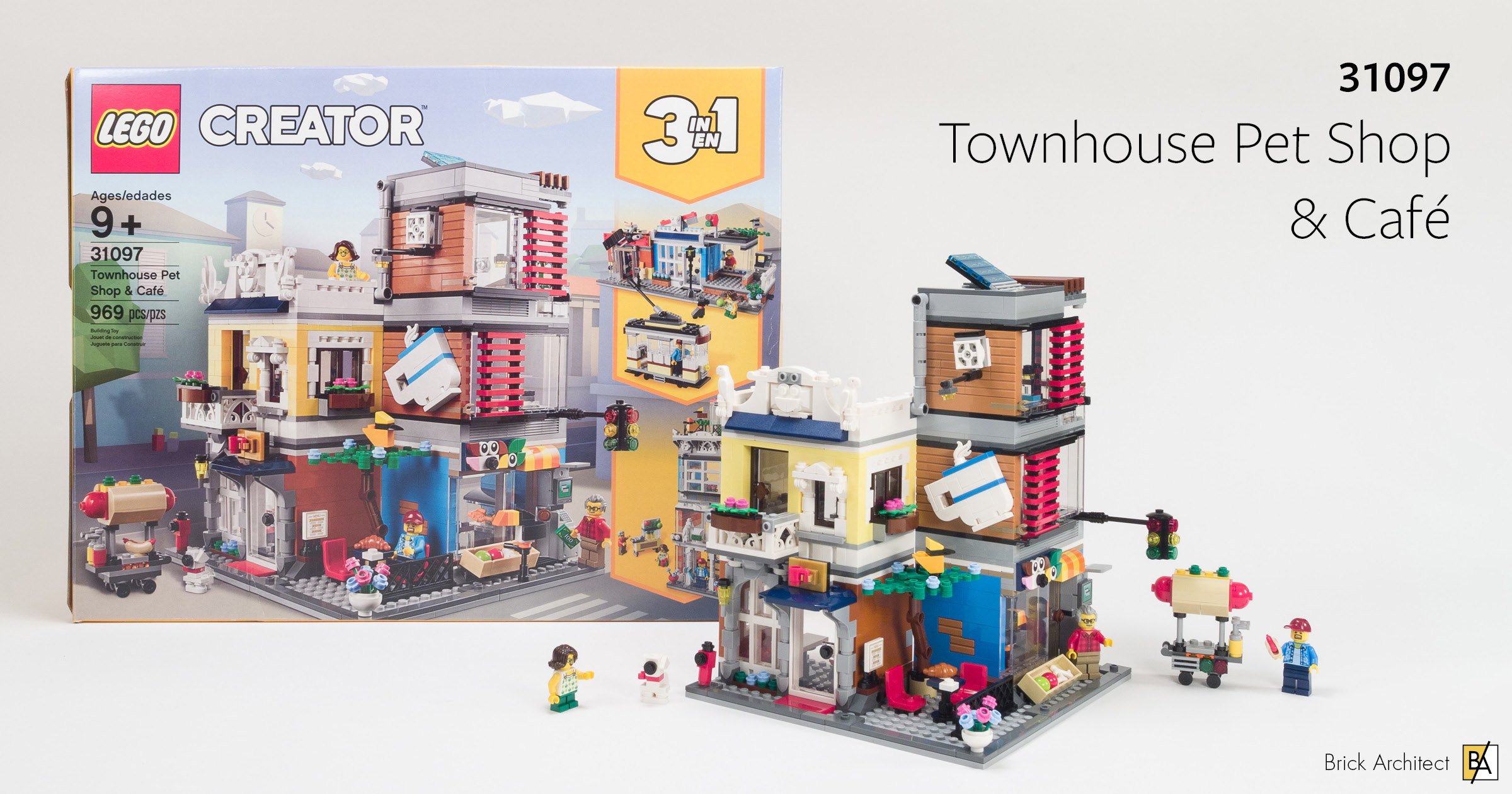
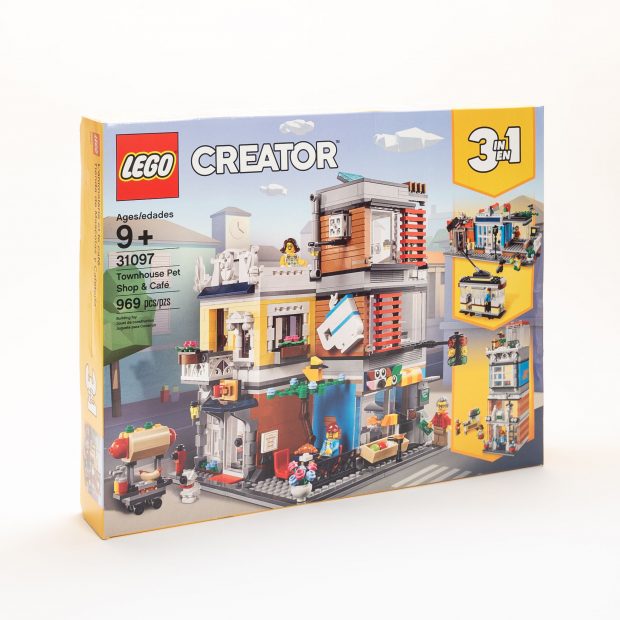
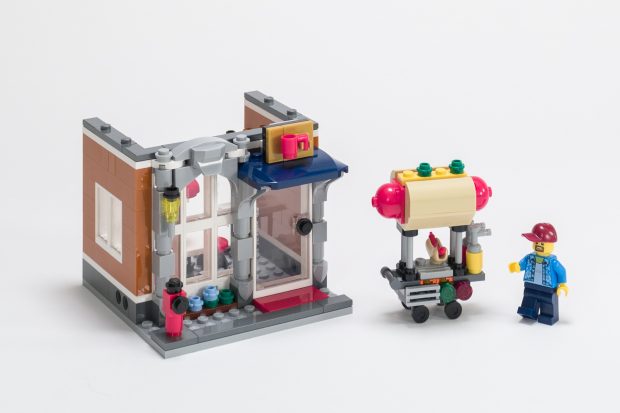
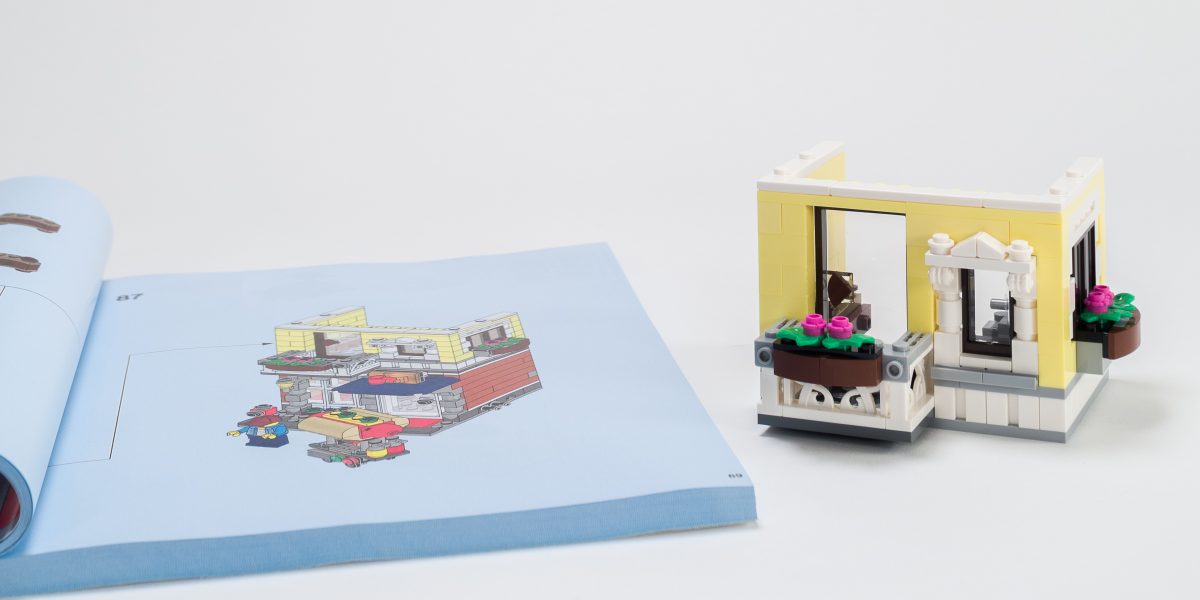
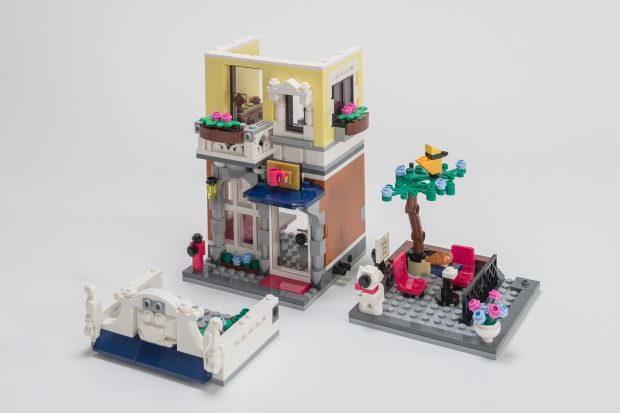
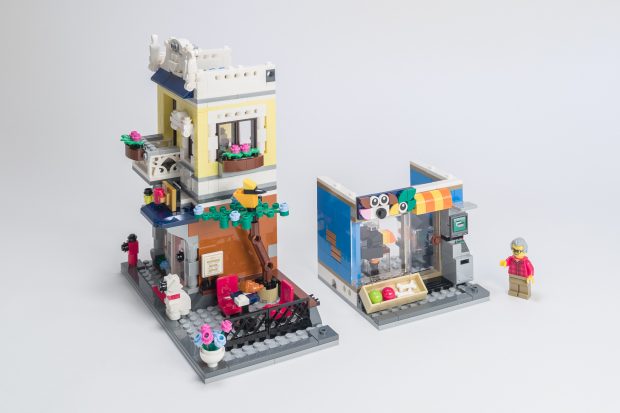
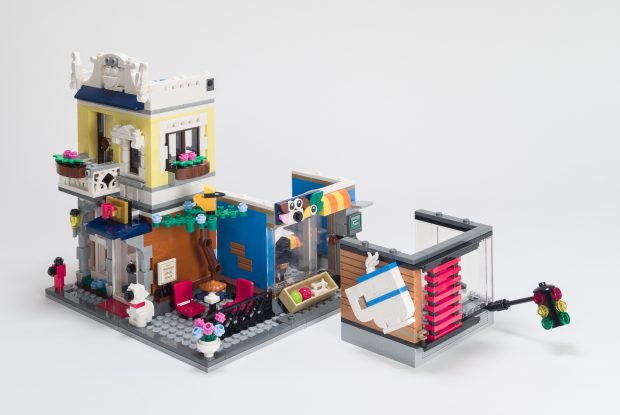

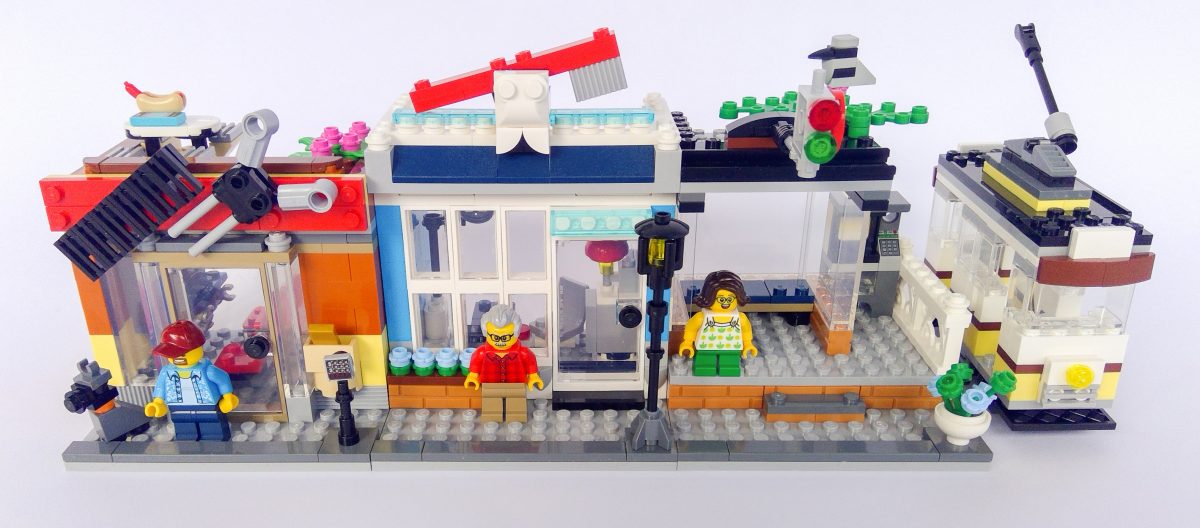

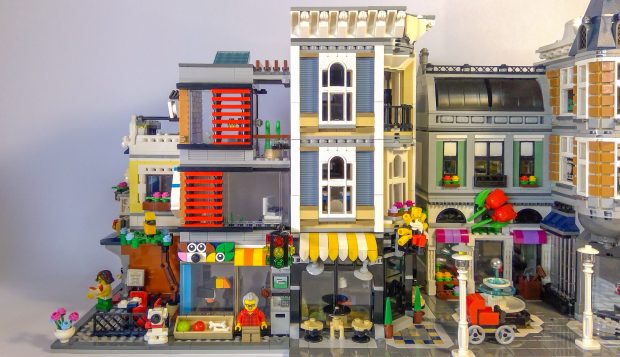
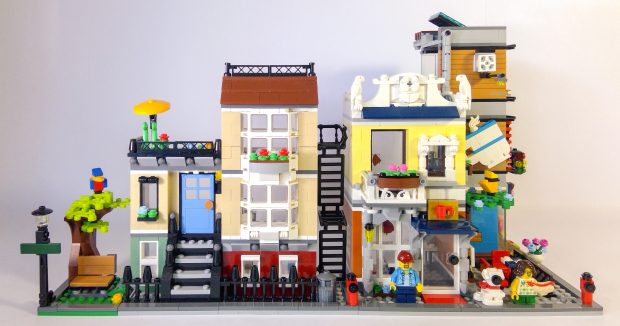

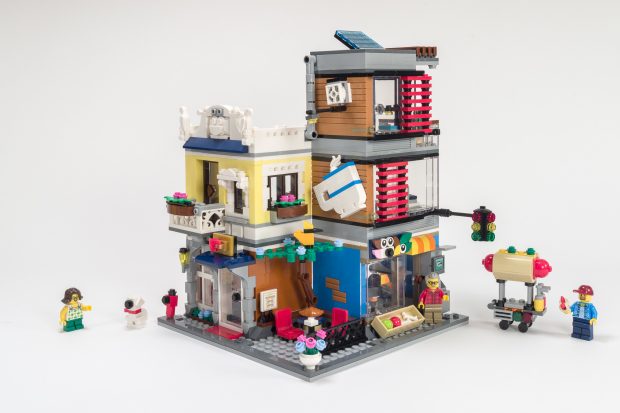
While I agree that this set’s architectural features are of lower quality and interest compared to a Creator Expert building, I would actually rate it 4 if not 5 stars. Reason being is that it is a great set for younger avid lego afficionados. My son is 7 and loves building legos, he loves big builds with complexity. Other 3-in-1 sets can be interesting (beach house, toy shop, etc.) but they dont come anywhere close to this one in terms of scale and detail.
Equally, I am convinced Expert series sets would be a waste for a kid, because they are closed environments – great for adults, it adds more realism, but for kids I have a feeling Expert sets would get built and then left to collect dust because they are not really playable.
In short, this set is the only one which combines higher complexity / detail and playability / imagination, thanks to the open rooms. I keep looking for more sets like this one to be announced, especially because it is made to be connected to other buildings (holes in the bricks at the bottom of walls)… alas to no avail so far, except for the toy store but it connects in a weird way, with the balcony being stuck on the other set’s windows… I really hope Lego will bring out more like this one. Big and fun!
You helped me realize that this little square thing on “modern” building is an air-conditioning unit. 😀 But in the same time, you made a tiny mistake – it’s not a parrot in the shop, it’s a toucan.
Thanks Serg. Yes you are right, it is a toucan not a parrot. I had assumed it was a parrot since I didn’t think you can buy a toucan as a pet. A quick google search has just taught me that in some countries you can. I love discovering new facts about the real world via Lego sets! Though I am concerned for the toucans. 🙂
I looked back through this to see if I could find a picture that seemed to illustrate this comment:
“There are some little references hidden under the foundations representing things you may find under a building which were a nice touch (see picture).”
But I could not find one. Is it missing, or did I miss something?
Hi Doug, sorry we did miss off that particular photo – as you are clearly wondering what is hidden, it’s cash and a bone.